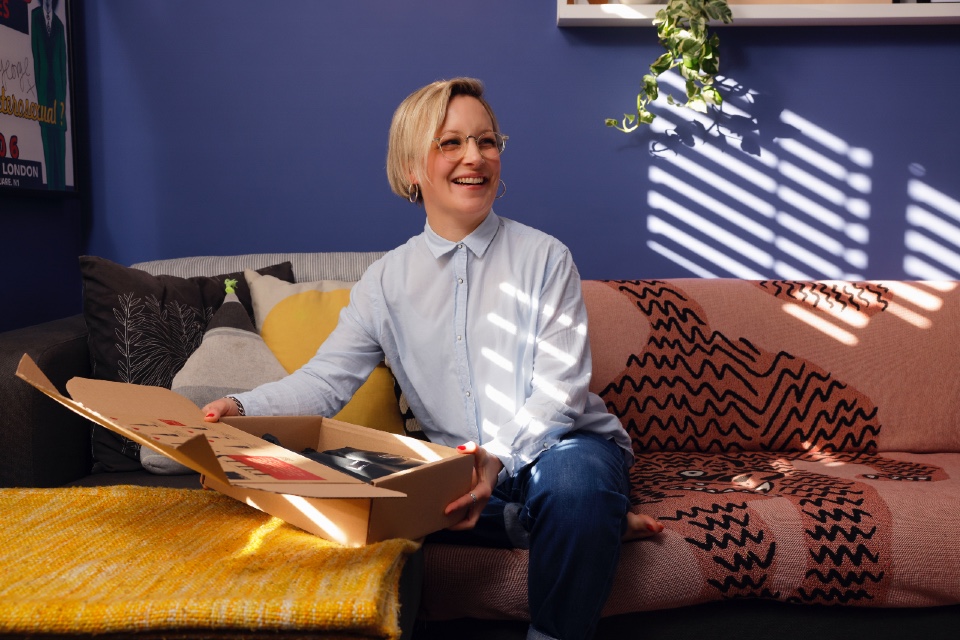Personalised packaging pioneer Penny Black secures £1.5M investment
Personalised packaging start up Penny Black, which is aiming to transform mundane ecommerce parcels into engaging branded unboxing experiences, has secured additional £1.5 million investment from AGFA and VC investor ninepointfive.
Both investment funds were triggered by the partnerships and wins across the UK and Europe, with the business having shown steady month-on-month growth and attracted a number of new customers. These include sustainable toothbrush retailer SURI, gin brand Warner’s Distillery and health supplements retailer Zooki.
Retailers and third-party logistics centres (3PLs) have been attracted to the easy-to-use marketing technology to help differentiate themselves from competitors.
“The moment consumers open their order will be an opportunity for brands to entice and retain consumers, helping them drive more revenue from existing customers,” said Penny Black CEO, Douglas Franklin. “Our software seamlessly connects ecommerce stores, marketing tools, warehouse management systems and fulfilment centres, making sure brands can bring in customer data and create hyper-personalised experiences and printed material that delights customers the moment they open purchases.”
Penny Black’s marketing SaaS tool for ecommerce brands is already being deployed across Europe by global fulfilment providers like Radial, Elanders, I-Fulfilment and Schroeders.
“3PL companies currently struggle to personalise ecommerce packages and can’t do much beyond mass-printed, one-design, gift notes thrown inside. Our unique offering helps automate a revenue-boosting process for on-demand, beautifully-designed printouts, specifically geared towards each customer, location, product or package,” Franklin explains.
Recent trials of Penny Black’s solution showed that retailers saw a measurable uplift in online sales after running personalisation campaigns. The toothbrush retailer, SURI, used Penny Black inserts to drive customer referrals and saw referral share rates up to 30% per cent, driving more customers to discover the brand for the first time. Other brands managed to equate up to an additional £2.20 in revenue per insert sent.
“Penny Black’s personalised inserts increased the size of our loyal customer base by six times; and once customers are in the community, their lifetime value (of sales) automatically rises. We can invite loyal repeat buyers to join the club, interact with fellow customers and take them on a physical journey of education and delight,” says Krisi Smith, Co-Founder at British tea retailer Bird & Blend Tea Co.
“As a young direct-to-consumer brand, enhancing our unboxing experience is a crucial growth opportunity for us. With Penny Black’s platform, we’re already seeing some brilliant results and delighting our customers. The integration with our 3PL was super simple, the personalisation process is intuitive, and with regular testing and iterating, Penny Black has helped us unlock tremendous value through this channel,” says Gyve Safavi, Co-Founder and CEO of SURI.
“Penny Black has solved the problem of creating a personalised unpacking experience for consumers in the world of ecommerce. The technology allows us to produce highly personalised campaigns, printed on-demand in our distribution centres, with engaging communications that elevate the consumer experience. This adds value to the service we provide to brands and delivers a solution that few other 3PLs can rival,” says Kevin Rogers, MD of Elanders UK.
Reflecting on the company’s swift ascent, Douglas Franklin, CEO at Penny Black, added: “The moment consumers receive their online orders is the only touchpoint left for ecommerce brands to have a physical connection with them. Brands need to surprise and delight customers to secure their loyalty, especially when acquiring new ones can be so expensive. Riding the wave of global growth in ecommerce, we’re delighted to be attracting more interest. And this latest boost in investment will help us develop even further.”
The UK tech startup first launched in the UK and Europe in April 2022. AGFA and 9.5 had the vision to support the business with an initial investment of £1.3m in October 2022. This further £1.5m investment is to help accelerate growth.


